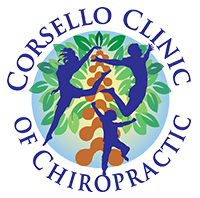Whiplash and Atlas Orthogonal in Stratford?
Whiplash and Atlas Orthogonal in Stratford

Atlas Orthogonal Chiropractic has been scientifically proven to effectively relieve symptoms of whiplash and help the body to heal itself after a whiplash injury in Stratford. The Journal of Whiplash and Related Disorders published a study of whiplash patients who were treated with Atlas Orthogonal. 84% of the patients experienced complete or near-complete resolution of their pain and other symptoms and all of the patients reported significant improvement in their conditions.
What is Whiplash in Stratford?
"Whiplash" describes a sudden movement of the head caused by an abnormal force that flexes or extends the neck muscles beyond their normal range of motion. There may be spinal injury as well as ligament or nerve damage and even a minor traumatic brain injury (MTBI).
When your neck gets "whipped" (which usually happens very fast), the ligaments in the neck get stretched, and they no longer prevent the neck vertebrae (bones) from gliding against one another. Signs of nerve damage may include numbness or tingling elsewhere in the body. An MTBI may have occurred if you forget the details of the incident or if you feel dazed and confused afterward.
How Common is Whiplash?
It has been estimated that there are 3 million whiplash injuries in the United States each year. This statistic is often misquoted as 1 million cases per year, because the condition is under-reported to government agencies, as compared to the reporting of car crashes that are attended by EMS or police officers and in which people are seriously injured or killed. However, 45% of people who suffer from chronic neck pain state that it was caused by a past motor vehicle accident. So whiplash is more common than we realize.[1]
How Does Whiplash Happen?
Car crashes are a common cause of whiplash injuries, but whiplash can occur in other ways. A blow to the head from slipping on a wet floor or getting hit in the head while playing a sport, for example, can also cause the head and neck to move in such a way that whiplash can result.
What Are Some Symptoms of Whiplash?
Aside from neck pain, these can include headaches, back pain, shoulder pain, visual and auditory changes, fatigue, dizziness, jaw pain, ringing in the ears, vertigo, nausea, numbness, or tingling in the hands or arms, depression, and anxiety, to name a few.
But My Car was Not Damaged. Could I Still Have Whiplash?
If you are in a car accident, even if there is little or no damage to your car, there may still be an injury to your neck. And although you may experience very little or only occasional pain now, it is important to be seen as soon as possible by an upper cervical chiropractor for a proper spinal evaluation.[2]
This is because when there is no vehicle damage, the energy that is absorbed by the car when it gets "crushed up" is instead transmitted to the driver or passengers. Even in a crash at a speed as low as 5 m.p.h., a person can suffer from whiplash.
How Can I Prevent Whiplash?
There are factors that make whiplash injury and chronic pain more likely, some that can be avoided and some that cannot. These include being rear-ended and having your head rotated, such as when entering or exiting a highway at the time of impact. Another is not being properly positioned in the driver's seat and not being prepared for the crash.
Car manufacturers, such as Saab and Volvo, have begun to make improvements in the design of the seat and head restraints in car models in an effort to prevent whiplash. Computer technology is also being developed to assist drivers in calculating the distance between cars and other potential crash conditions.
Dr. Arthur Croft, an upper cervical chiropractor and the director of the Spine Research Institute of San Diego, has approximated that only 10 percent of car crashes can actually be avoided. But people who have the worst outcomes are those who are caught completely unaware of the impending crash. Based on his research, even a few seconds of warning to allow the person to brace for the crash makes a difference.
Here are some suggestions about how to prevent or minimize whiplash injury:
Consider Safety When Buying A Car: Some safety factors include vehicle design, size (small cars = greater risk), and head restraint height in relation to your height. Also, ask about other features the car may be equipped with to avoid crashes. The Insurance Institute of Highway Safety[3] publishes vehicle safety ratings.
Wear A Seat Belt And Properly Position Your Head Rest: Every time you get into a car, you should immediately fasten your seat belt. But also, if you are driving, make sure your headrest is adjusted to the right height for you, especially if you share a car with someone else. The headrest is actually a head restraint, and it should be centered on the back of your head.
The Insurance Institute of Highway Safety recommends that a head restraint should be positioned evenly with the top of your head. If it won't reach the top of your head, make it as high as it will go. The distance from the back of your head to the headrest should be as small as possible, ideally less than four.
Check Your Kids' Car Seats: Carefully follow manufacturers' instructions when installing your children's car seats. If you are unsure, many local police stations will check that your car seats are installed properly free of charge. Also, a child is recommended to remain rear-facing until his or her second birthday. Heavy jackets and snowsuits can prevent the child's restraint system from functioning properly.
Also, the belt should be positioned high on the child's (think of how a race car driver wears his or her belt - this can give you a visual guideline for how to strap your child in his or her car seat.) Check out the Insurance Institute for Highway Safety's website for much useful information regarding children's car safety.
Position Yourself For the Crash: Car crashes often happen quickly and without warning, but if you have even a few seconds to position yourself for a crash, follow these tips: Lean your head and neck back as far as possible so that you are touching the seat back and properly adjusted headrest. Grip the steering wheel with both hands and straight arms. Press your foot on the brake as hard as you can (assuming this is safe to do).
Look straight ahead and do not turn your head at all, not even to look in the rearview mirror. Turning your head or body during a car crash results in a greater chance of injury to your ligaments. Scrunch your shoulders up toward your ears and brace for impact. Seek immediate care after the crash
To have the greatest chance of successful recovery and prevent the likelihood of a painful, chronic condition, you should begin treating for a whiplash injury within two weeks of the incident with a doctor who specializes in treating whiplash injuries.
Whiplash Symptoms, which usually begin as stiffness and/or soreness in the neck and/or back, may appear immediately or take weeks or months to appear. The worst thing you can do is delay treatment, thinking the pain will "just go away." This may make it more difficult to alleviate the symptoms later.
Why Choose A Upper Cervical Chiropractor for Whiplash Treatment?
Studies in the Journal of Injury and the Journal of Orthopedic Medicine show that people who saw no improvement in their symptoms from treatment by an orthopedist, physical therapist, or pain management specialist were referred to upper cervical chiropractors to treat their chronic pain from a whiplash injury.
In both studies, the patients improved with upper cervical chiropractic treatment. The studies concluded that upper cervical chiropractic is the only proven treatment for chronic neck pain caused by whiplash.
How Does Atlas Orthogonal Help as a Whiplash Injury Treatment?
Atlas Orthogonal Chiropractic has been scientifically proven to effectively relieve symptoms of whiplash and help the body to heal itself after a whiplash injury. The Journal of Whiplash and Related Disorders published a study of whiplash patients who were treated with Atlas Orthogonal. 84% of the patients experienced complete or near-complete resolution of their pain and other symptoms and all of the patients reported significant improvement in their conditions.
Why Choose Dr. Corsello?
Dr. Corsello has helped countless patients who have had a car accident, work-related, or sports-related injuries to be pain-free without drugs or surgery using the Atlas Orthogonal technique. Further, Dr. Corsello has attended the Spine Research Institute of San Diego to receive advanced training in whiplash and motor vehicle injuries. He will work with you, your attorney, and your insurance company to help you to feel better and obtain the recovery you deserve. Peace of mind is only a phone call away!
Sources
-
- [2] L. Bunketorp et al. A descriptive analysis of disorders in patients 17 years following motor vehicle accidents. Eur. Spine, J. 2002; 11 227-34.
Monday
8:30am - 12:30pm
3:00pm - 6:00pm
Tuesday
By Appointment Only
Wednesday
8:30am - 12:30pm
3:00pm - 6:00pm
Thursday
10:00am - 12:30pm
3:00pm - 6:00pm
Friday
7:30am - 12:30pm
Saturday
By Appointment Only
Corsello Clinic of Chiropractic
2021 Main Street
Stratford, CT 06615



